Summertime… Beach stays, trips abroad, hikes… It is a great opportunity to take a break with your family and keep daily stress at bay. You book a lovely hotel with your other half, you read a map with your children asking them where they want to go, you pack your suitcases, you… Wait! Aren’t you forgetting someone? “Babe, what about the cat? Is he coming with us?!”
Most pet owners tend to forget about it: having a pet means new responsibilities and taking care of them when you go on holidays is one of them. Unfortunately, too many people still ignore it. The months of December, January and February are critical since many people seem to struggle when it comes to taking care of their pets while also going on holiday. Read our tips below to make sure your pets will have a great time this summer, just like you!
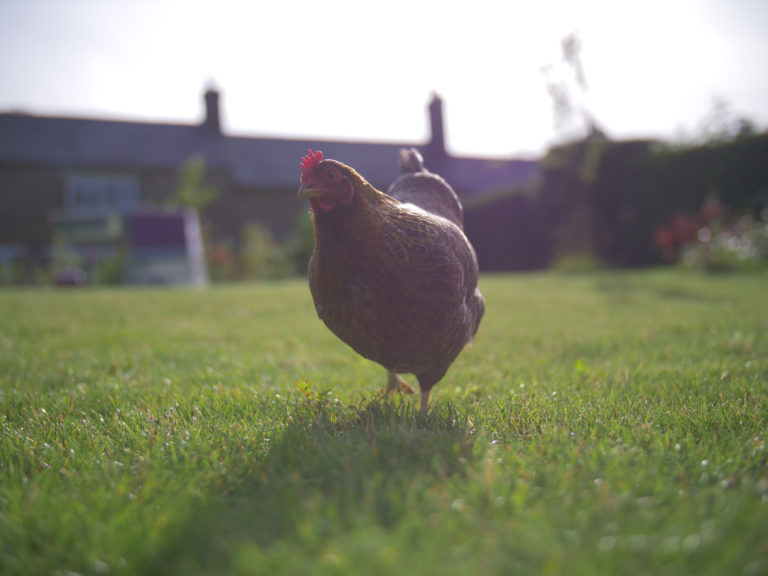 CHICKENS
CHICKENS
You might be an adventurous Frenchman aiming to sail around the world with your hen (https://www.bbc.com/news/world-europe-36475672). However, in all other cases, we recommend that you do not take your chickens on holidays with you. The best thing to do is to ask some friends or neighbours to take care of them while you are away, offering them to help themselves to eggs. If you are lucky enough to have an Eglu Cube on wheels, you can even move your coop directly into your neighbour’s garden!
GUINEA PIGS AND RABBITS
Just like with chickens, it is better to leave your rabbit or guinea pig at home and ask a friend, ideally someone they already know, to come and look after them. If you still decide to take them with you, or if you don’t have any other choice, be very careful with temperature change. These smaller pets are extremely sensitive to it and a sudden temperature change could be fatal. While in the car, make sure that they are neither too hot (do not leave them next to a window or in a parked car) or too cold (do not put them in front of the air con). You also want to check that nothing is at risk of falling and hurting them in the cage: take away the bottle and the feeder and stop regularly to give them some water and food. Remember that rodents and rabbits are very shy animals that like to have their own routine and tend to struggle with change.
CATS
You can definitely take them with you, but in most cases you don’t have to: cats are independent animals that can take care of themselves for a few days. Fill their bowls with food and water before leaving. If you are away for less than 10 days, ask a friend to come and check on them (one or two short visits a day should do).
If you are away for more than 10 days, it is better to leave your cat with some relatives, preferably people who already know your cat and who don’t have any animals that the cat won’t get along with. You can also put your cat in a boarding kennel. However, keep in mind that this can be risky since your cat could feel abandoned (new place, new faces…) and get depressed. Before taking them to the cattery you can give them some soft and natural tranquillizer, like Bach flower, to help them adjust.
DOGS

Dogs are probably the most complicated animal to deal with when going on holidays. You can’t just leave them at home with food and water. This is not only bad for your dog, but could also lead you to be accused of animal cruelty. The best option is definitely to book a seat for your dog in your car and help them pack their suitcase!
Why should I take my dog with me?
Of course you can leave your dog with your friends or family (preferably someone they already know). However, keep in mind that dogs are very social animals and thrive on their owner’s company. For them, holidays will be a fantastic opportunity to spend some quality time with their favourite humans. Moreover, since you are on holidays, you will have more free time and will be able to spend entire days with your dog, which will make them extremely happy. No more long and boring days waiting for you at home! No doubt that you and your family will also be delighted to spend the whole day playing and exercising with your dog. They can also help you to interact with fellow holiday makers: many people won’t be able to resist giving them some attention!
How to organise a trip with a dog
Here is a list of what you can do to make sure your dog is ready for the holidays and everything goes fine while you two are away from home:
- Before going, make sure your dog is used to travelling in a car. Some dogs can be car sick and it is good to prepare them, especially if you’re planning on a road trip and are spending a lot of time in the car!
- Make sure your dog knows some basic commands such as heel and sit. If they are able to go on a walk without pulling on the lead, it is even better!
- Check that their vaccinations are up to date, and if you’re going abroad, double check what the requirements are far in advance.
- Bring everything they may need: food, of course, but also a first-aid kit, their health record book, the lead, the food and water bowls, the crate, their favourite toys, some poo bags… It is very important to take your dog’s food with you if you are going abroad since you can’t make sure you’ll find their favourite brand in the country you’re visiting.
- While travelling, put your dog in their cage in the boot of the car.
- Before visiting a place, make sure they accept pets. Never go to a hotel before checking it. Likewise, you will easily find a list of dog friendly beaches online.
- Check that your dog is not too hot. If you’re going on a walk, don’t forget to bring a bowl and a good amount of water.
- When settling your dog somewhere, do it properly: make sure they have some food, some water, some shadow… Even if it is just for an hour!
- If you think it is necessary, you can fit your dog with a GPS collar. This can be useful when you go hiking in the wild. You can also download various apps on your mobile to help you locate a lost dog, find a vets near you or keep record of your dog’s health.
PUBLIC TRANSPORT
In some states you can travel for free with your pet on most public transport: buses, taxis, trains and ferries. However, to make sure everything goes smoothly, always check that that is the case before you board. Be aware that coach companies generally do not accept pets except for assistance dogs. Remember that passengers can complain about your animal’s behaviour so try and make sure your pet will be able to behave themselves while travelling.
When travelling abroad, make sure you can go on public transport with your pet since this can vary according to the country (in some places you will have to book a ticket for your animal).
If you’re travelling by plane, mention that you have an animal when booking and check that your animal’s vaccination is up to date. On the day of the departure, make sure to arrive early. Cats and small dogs will generally be allowed to fly with you in the cabin. However, bigger dogs will have to travel in a heated and pressurised part of the cargo hold. Birds, rabbits and hamsters are often forbidden but some airlines may accept them.
This entry was posted in Pets on November 25th, 2019 by linnearask
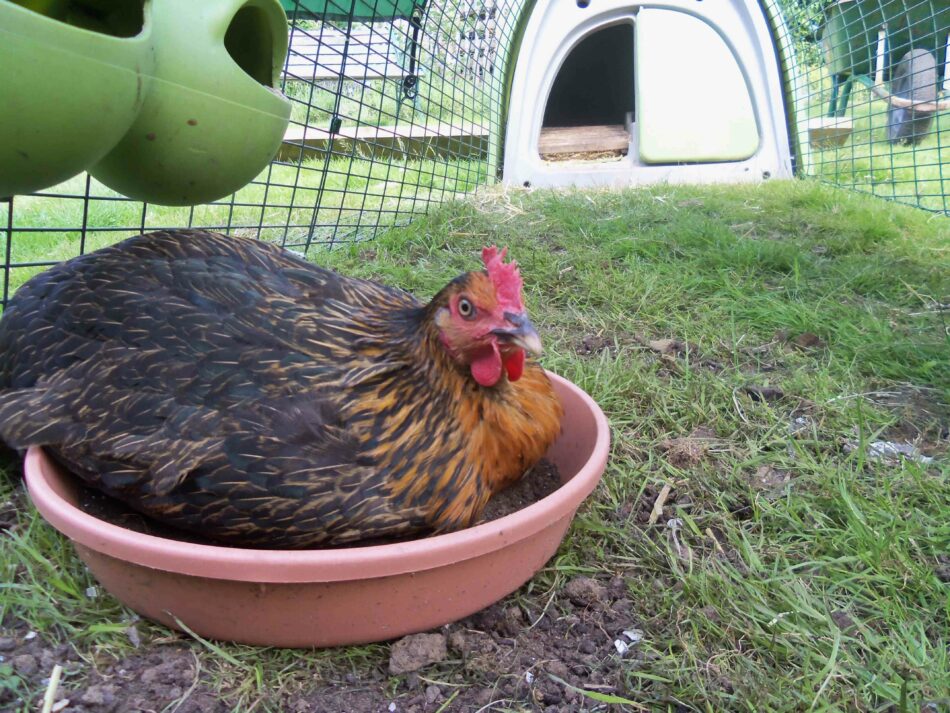
Wondering how to make a dust bath for your chickens? Most hens are perfectly content to dig up their own patch of earth to roll around and fluff their feathers in – but by making your own dust bath from chicken-safe ingredients, you’ll elevate your hens’ bathing from a metaphorical bucket of cold water, to a luxurious bubble (well, dust) bath.
Why do chickens need dust baths?
Dust baths are an important part of overall chicken health. Like humans, chickens bathe to get impurities off of themselves and to feel better in general. It may seem counterintuitive to roll in the dirt to get clean, but the right dust bathing spot can absorb moisture and oils on the skin, and can rid birds of mites and lice. Hens aren’t the only birds that enjoy a good roll in the dirt – many wild avian species can be observed taking dust baths.
Chickens will find a soft, dusty or sandy spot and scratch around in order to create a shallow well to plop down into. Once they’ve laid down, hens will wiggle back and forth while flapping their wings in a shoulder-shrugging motion. They will lay on each side and repeat the process until they are sufficiently coated in dust or sand. When they’re done, they’ll hop up and shake vigorously – just like a dog after a bath. After a quick feather preening they’ll be done and dusted (literally).
Bathing this way benefits chickens mentally as well as physically. Just like we may take a warm bath to unwind at the end of the day, dust bathing helps hens relax and feel better. Hens may also hit the dust when they feel like socializing – much like humans in a sauna or hot tub. You may notice hens taking a dust bath with 2 or 3 of their closest flock friends.
Making a dust bathing area for your chickens
Giving your hens a designated dust bathing spot will deter them from creating their own – potentially in your favorite flower bed or another less-than-desirable location. You can use cat litter pans, the tray from a small animal cage or the bottom part of an enclosed dog kennel. But, if you have larger hens or a large flock, they may need more space than these shallow basins have to offer.
Use your imagination to create a dust bathing spot for your hens. Here are some ideas for inspiration:
- An old tire
- Flexible storage tote
- Livestock feeding pans
- Plastic toddler pools
You can also create a permanent dust bathing area by digging out a shape in the ground and edging it with pavers or stones.
Dust bathing areas or containers should have an edge at least 12 inches above the “dust fill line” to avoid hens tossing all of the contents out during their vigorous cleaning sessions. Make sure that the edge is high enough to contain the dust, but also low enough to accommodate your smallest flock members.
Place your flock’s bathing area in a sunny spot. Chickens will seek out sunny areas to bathe in – especially during the winter months. Be sure to keep their bath in an area where it can stay dry. Wet dust bath contents will dry eventually if they get rained on – but depending on the amount it could take several days. Chickens will bathe daily, so try to keep it as dry as possible. A large, elevated chicken coop can provide the perfect spot underneath with just enough sunlight and protection from the rain.
5 things to add to a chicken dust bath
You can make your flock a nutrient-packing dust bath from simple ingredients – many of which you may already have at home.
1. Wood ash
One of the most beneficial ingredients to a good chicken dust bath is something you can find in your own home or backyard. Wood ash from fireplaces or outdoor fire pits are great additions to your hens’ bath. Ash contains vitamin K, calcium, and magnesium, and helps absorb toxins from the skin of chickens. You may see your hens eat some ash, which can also benefit them.
It’s important to only use wood ash if you’re sure of its source. Do not use any ash from treated wood or lumber, as it contains toxic chemicals that can harm your hens.
2. Food-grade Diatomaceous Earth (DE)
This all-natural, silica-rich powder is a powerful anti-parasitic both on your hens and around their coop. DE destroys the exoskeletons of parasites like red mites, lice, fleas, and ticks. In fact, DE can also be added to your hens’ diet for additional parasite prevention. In addition to your flock’s bath, sprinkle some DE around the edge of your chickens’ run and coop to keep pests at bay.
3. Sand
Sand makes a great base for dust baths, but be sure to get the right kind. There are many types of sand available, but steer clear of children’s play sand, as it’s usually treated with chemicals. Aim for a coarse variety like contractor’s or multipurpose sand. Don’t use fine sand on its own – if ingested, fine sand can lead to crop impaction in hens.
The main purpose of sand is to ensure that the rest of your chicken dust bath ingredients don’t clump together, and to add weight to the mixture. If you’re using fine sand, make sure to mix it thoroughly with soil.
4. Top soil or peat moss
If you don’t want to dig up your own dirt, a bag of top soil or peat moss can be used instead. Widely available and inexpensive, bags of top soil and peat moss offer the benefits of natural soil without the hassle of digging it up.
5. Dried herbs
If you’re a chicken keeper that also gardens, you’ll likely have herbs available to add to your hens’ dust bath. Herbs help attract hens to bathing spots in addition to being beneficial for their skin and immune systems. Some herbs to add to your flock’s dust bath include:
- Lavender
- Rosemary
- Thyme
- Mint
- Oregano
- Sage
- Parsley
Don’t forget to save some herbs for your hens’ feed as well as their bath. All of these herbs help to support a healthy hen diet and lifestyle – both inside and out.
Maintaining your chickens’ dust bath
For dust-bath maintenance, simply clean out any droppings that find their way in and refill the contents of the bath when needed. Some hens may bathe multiple times a day, while others may bathe every other day. Depending on how heavy the dust bath usage is, you may want to keep an air-tight container of pre-mixed chicken dust bath for easy refills.
While chicken perches are flock favorites, be sure not to place your hens’ dust bathing area directly below their perching areas to avoid accumulation of droppings. If you have a walk in chicken run, cover the portion of the run that has the bathing area with clear weather protection covers both on the top and sides to prevent the contents from getting wet. This will allow for sunshine to warm their dust bath without the risk of it turning into mud.
Omlet and your hens’ health
Keeping chickens healthy and happy doesn’t have to be a chore. With thoughtfully designed chicken products like the Eglu Cube Chicken Coop, Walk In Chicken Run, and Weather Protection Covers, taking care of your chickens has never been easier. A homemade chicken dust bath is the perfect addition to these purposefully crafted products.

This entry was posted in Chickens on November 23rd, 2019 by linnearask
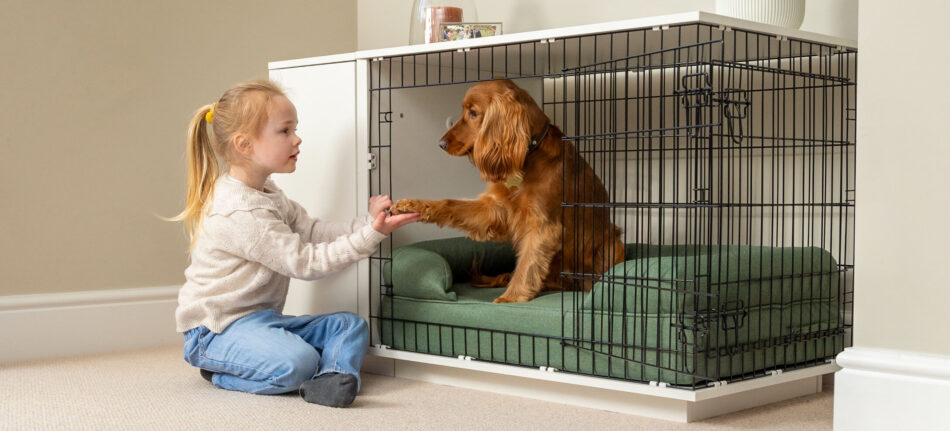
It’s a fantastic achievement to transform that over-excited, jumping, weak-bladdered puppy into a trained and trusted friend and companion. The transformation isn’t automatic, but comes about through persistence, organisation, and a few simple dog training tools.
1 – The training sessions are too long
This is definitely rule number one. Training takes a lot of canine concentration, and if you overdo it, your dog will become bored and/or impatient. And frankly, so will you. A training session should be between five and ten minutes. After that, it’s time out. You can resume the training with another 10-minute session an hour or so later.
2 – You’re getting impatient
You might think your dog is the cleverest pet you’ve ever met. But he’s still a dog, and not a human, so you shouldn’t expect miracles. A dog has to concentrate to learn new commands, especially ones that go against his natural instincts to run, bark, eat, and jump up to greet people. Many owners lose patience when, for the umpteenth time, the dog fails to respond to a command, lies down instead of sitting, forgets to wait when you tell them, and so on.
As soon as you lose your temper, your dog will sense the hostility and begin associating training with human anger. Understandably, he’ll not be too keen on taking part in future sessions.
3 – You’re on auto-repeat
If your dog fails to get the hang of a new command or trick on the third attempt, let it go. The mystified mutt will have made three incorrect guesses, and getting it right after ten attempts will not make the training stick. Revisit these ‘fails’ in later training sessions. Review your approach – was it too vague, too similar to another command, or have you fallen into the traps mentioned in points 1 and 2 above?
Similarly, if your dog fails to lie down when you say “lie down”, don’t repeat the command endlessly. It will tell the dog he doesn’t need to respond immediately, or it might make them think that the command for ‘lie down’ is actually “Lie down! Lie down! Lie down! Lie down! Lie down!…etc.”
4 – Everyone’s moody
If a dog is tired, grumpy, hungry, or expecting his regular walk, a training session isn’t going to go down well. The same applies to the human trainer – if you’re not in the best of moods, the dog will know, and neither of you will be in the best frame of mind for a training session.
5 – The default approach is punishment
There are two ways of training a dog – the old-fashioned correction-based method, and the much better ‘positive reinforcement’ method. The old way involved punishing a dog for getting things wrong, while the modern way is to reward them when he gets it right. Some owners mix and match the two methods, which can be confusing. The poor dog doesn’t know what’s coming next – a tasty treat or an angry gesture.
You should never shout your dog’s name in anger or as part of verbal punishment either, or he will come to associate his name with negative things.
6 – The training is inconsistent
Always use the same command words for each action, and make sure the dog performs the required action once he’s learned it. If you give the command and then let it slide if the dog doesn’t bother responding, you’re undermining the process. When training a dog you’re establishing sets of rules, and consistency is the only thing that’s going to make them stick.
If using a dog clicker, make sure the clock is reinforced with a treat. And don’t click loads of times for a single training action or behaviour, or the click will lose its meaning for the dog.
7 – The training is tailing off
If a dog learns new tricks and performs well in early training sessions, it doesn’t mean the behaviours will stick in his head forever. They need reinforcing every day over the dog’s early months, otherwise he will get rusty (a bit like you trying to recall those school French lessons 20 years later). Some owners make the mistake of thinking a paid-for training session can replace a year of regular and patient training. It can’t.
8 – Bad behaviour is being rewarded
If a dog is misbehaving, it can be tempting to shout their name angrily, and then reward them with a treat or attention when they decide to come. To a dog this means bad behaviour = reward. Ignore the bad behaviour as much as you can and draw a line by distracting the dog by asking them to sit or lie down (without using his name). You can then reward the good behaviour.
9 – You’re overdoing the treats
If dog treats are given too frequently or the portions are too large, your dog may decide, later, that he will only listen if there is food involved. There are also health issues involved with overdoing the snacks too. Praise, play and affection are just as important as food treats when training.
10 – A bull terrier can’t be a sheepdog!
There’s no single ‘best way’ to train a dog. It depends on breed and temperament. So, don’t rely on previous experience or the advice of another dog owner, if the dogs in question were completely different characters.
No dog is born pre-trained. But by avoiding these 10 common mistakes you’ll make the training much more effective, ensuring that everyone involved – human and dog – has a great time during the process.
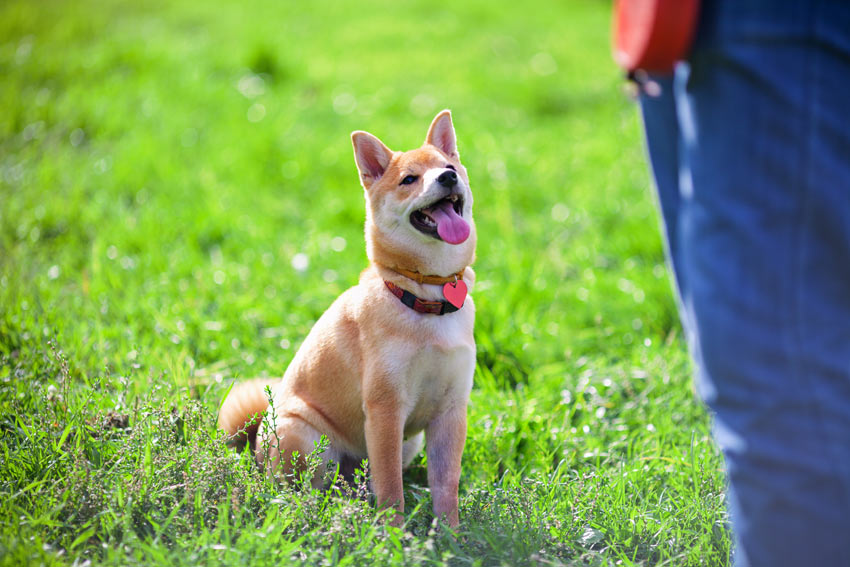
This entry was posted in Dogs on November 21st, 2019 by linnearask
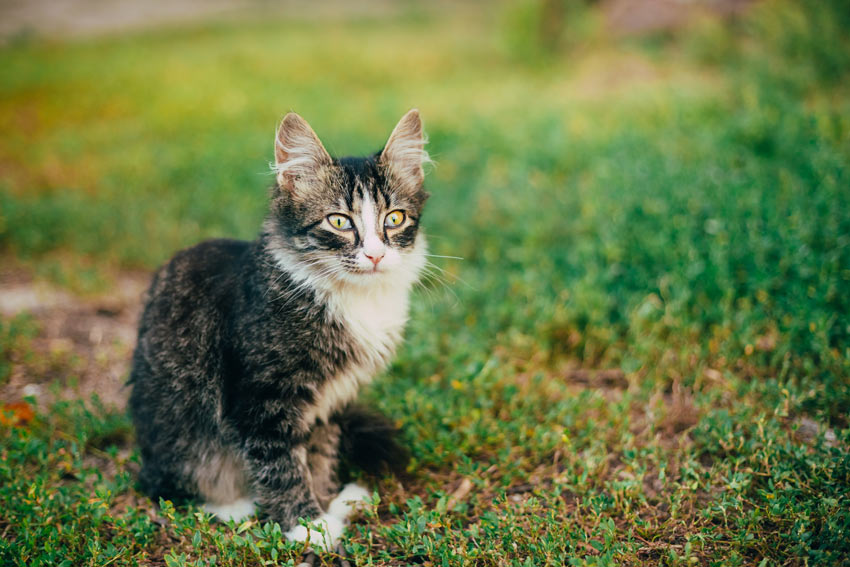
Contact neighbours to check sheds and garages
Before you go for a full search party, try contacting your neighbours and ask them to check their garages and sheds to see if your cat has accidentally got locked in. As you’re walking around the neighbourhood, call the cat’s name and listen out if you can hear a cry from any garages.
Make sure someone is home
If you don’t have a cat flap, make sure someone is at home while you’re out searching just in case your cat decides to come back. Some cats do just like to go for a walkabout for a few days. If the weather takes a turn and it starts to rain, it can be heartbreaking to think of your pet out in the cold weather, but actually bad weather can help as it will drive your cat home as it seeks shelter.
Go out searching
If you know your cat, you will know where their favourite hang out is. Make sure you head along to their most frequented spots and take a box of treats with you to loudly shake and call their name.
Put up posters
Make sure you put up posters locally, including lampposts, notice boards in shops and post through peoples doors to spread the word and make them more aware.
Make sure they are collared and chipped
If your cat is chipped, then if they’re taken to a vets the vet can call you and reunite you asap. If they are not, make sure you call all of the local vets and check your cat hasn’t been brought in.
Social media
Put up a post on your social media similar to your physical poster and ask friends and family to share it. Also message your local community Facebook groups to get them to post about the missing cat.
Let your other cat help
If you have another cat, it can be tempting to keep them locked in whilst the other one is missing due to your worry. Don’t do this! Make sure your other cat is allowed out exploring as they normally do, more often than not they will lead you to your other cat who might potentially be trapped or injured. Also if you follow your other cat it will give you an idea where they normally spend their days.
Use smart front door cameras
Front door cameras such as Nest and Ring will often pick up any movement going past their house including animals. Check with your neighbours if anyone has one and ask them to look at motion alerts from the time you last saw your cat.
If you move house
To avoid your cat getting lost when you move house, keep them indoors for at least 3 weeks to avoid them getting disoriented or trying to head back to their previous territory. This time indoors allows them to settle and regard the new house as ‘home’ marking their scent.
You can also rub butter on your cats paws on the first day you arrive, instead of stressing and trying to dart out the door your cat will enjoy sitting down and licking the butter off its paws thereby slowly becoming familiar with their surroundings.
Whilst they’re kept indoors, keep sprinkling some of their used cat litter around the garden so that it warns off other cats and also is a familiar scent for them when you do let them outdoors. Once you do let them out, do it just before a usual mealtime, if they’re hungry they will more likely come back to the sound of dinner rattling in the box or packet.
The need and want to return to their old home can be very strong for a cat, particularly if the house isn’t very far away. Make sure the new owners have your contact details in case your cat returns.
This entry was posted in Cats on November 16th, 2019 by linnearask

Summer is the greatest time of the year, but when the temperature rises it’s important to make sure your rabbits, and their home, are ready for the warmer weather. Rabbits are generally very hardy animals, but they actually tend to deal better with cold spells than with extreme heat.
It might be tempting to move your outdoor rabbits inside your air-conditioned house to help them stay cool, but sudden changes in temperature can actually be worse for them than staying outside in the heat. It is, however, important to know that rabbits can die from heat stroke, so make sure that you’re doing everything you can to prevent your rabbits from getting ill.
The Hutch
The easiest thing to do to make sure your rabbits are comfortable is to get them a hutch that stays cool even in the height of summer. The Eglu Go hutch has twin-wall insulation that keeps the heat out, and makes the temperature in the hutch stay relatively stable throughout the day. It also has a draught-free ventilation system that encourages air to flow through the hutch without creating a nasty draft.
Another important thing is shade. If possible, place the rabbits’ hutch and play area in a shady part of the backyard, ideally under a tree or next to a building that blocks the sun. If different parts of the yard are shaded at different times of the day you might be able to move the play area as the day goes on. This is very easy with Omlet’s Zippi runs and tunnel system. If you don’t have any natural shade you will need to add covers and sun shades to the run to make sure that your rabbits can be outside without having to be in direct sunlight.
Food and Water
Make sure that your rabbits have plenty of fresh water at all times. Consider changing the water several times a day when it’s very hot; rabbits are much more likely to drink more if the water is nice and cool, just as you would. Speaking of water, fill a few plastic bottles and put them in the freezer for a few hours. You can then place them on the run or in the hutch for your rabbits to lean against when they’re feeling warm. Prepare a few bottles so you can swap them around when the first ones have melted.
Your bunnies will also love to eat cool and refreshing things when the sun is out. Try washing the vegetables you are giving to your rabbits with cold water before you bring them out to the hutch.
Grooming
Other things you can do if you think your rabbits are finding the summer a bit sweaty is to remove all their excess fur. Brush your pets more regularly in summer to make sure they’re not carrying around unnecessary layers. If you think your pets are looking particularly hot you can mist their ears with cool (but not ice cold) water from a spray bottle. Do however make sure the water doesn’t get into the ear canal. Another important thing to think about is the rabbits probably won’t appreciate getting handled during the hottest hours of the day, so leave play time to later in the evening.
Fly Strike
It is also very important to know that the risk of fly strike is much higher during the summer months. Fly strike is caused by flies getting attracted to damp fur, urine and faeces and laying their eggs in the rabbit’s bottom. When the maggots are born after a few hours they eat the rabbit’s flesh and release toxins into the body. Fly strike can kill a healthy rabbit who just happens to have loose stools for a day or two, but if you know that your rabbit sometimes struggles to clean itself it is extra important that you check their bottoms daily. If you see any signs of fly strike, contact your vet immediately. The same goes for heat stroke. Don’t panic and dip your rabbit in cold water, instead take your rabbit to a cool room inside to try to lower their body temperature while you phone the vet.
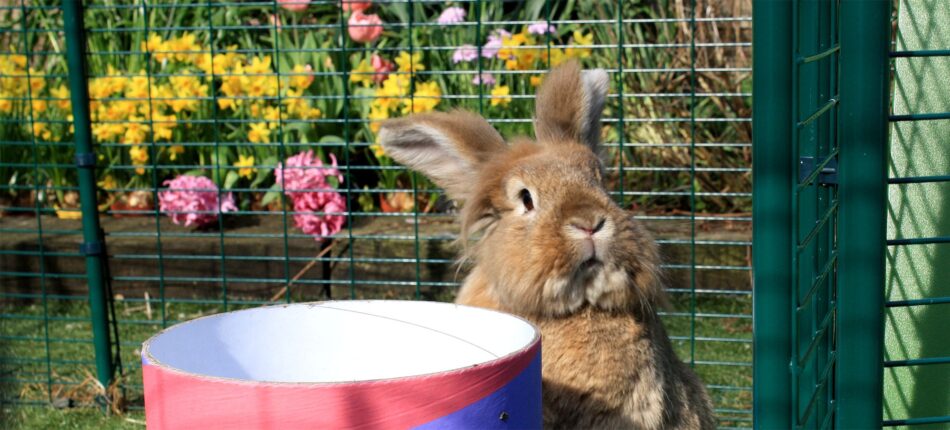
This entry was posted in Rabbits on November 14th, 2019 by linnearask
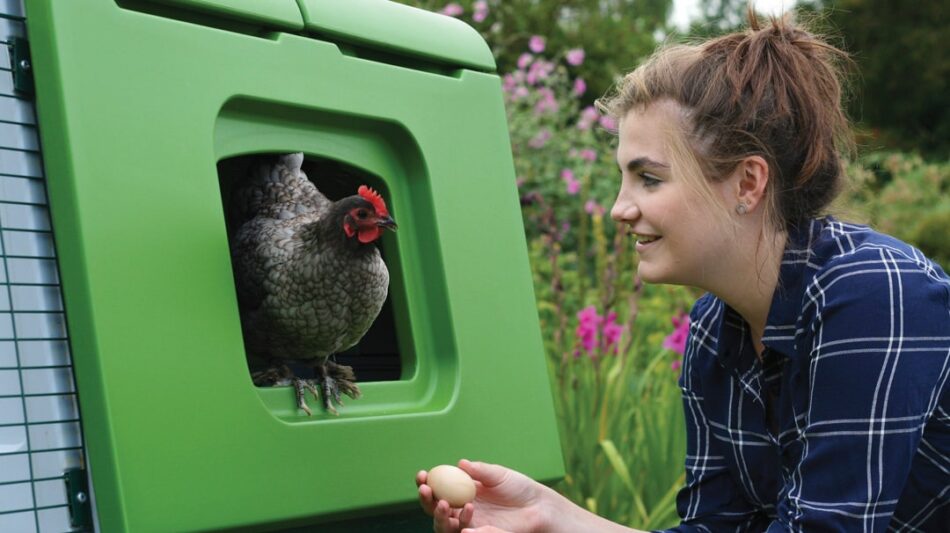
Finding eggs in the nest box is one of the joys of being a chicken keeper!
Most people decide to keep chickens because of the prospect of being supplied with fresh and delicious eggs! So when your hens don’t deliver the goods or stop laying completely, it can be worrying, baffling, and frustrating. There are several reasons to explain this behaviour, and fortunately, in many circumstances, this is no cause for concern. Here are the most common reasons as to why your chickens have stopped laying eggs:
The Age of Your Hens
When raising chickens, you’ll notice that they have a laying cycle, or how their age affects their egg production. Backyard hens typically live to around six to eight years old, but will only lay eggs for a certain number of these.
Many hens will not produce eggs until they are six months old and thereabouts, but the exact timing depends on the breed. Some breeds, such as Australorps, Golden Comets, and Leghorns, begin laying early, in fact as early as between 16 and 18 weeks. Some larger breeds such as Orpingtons, Plymouth Rocks, and Wyandottes, however, could have you waiting up to eight months for their first egg to appear!
Whilst egg production will gradually decrease every year, your hens will eventually stop laying eggs approximately around the six-year mark. Again, this is dependent on the breed and some hens can stop a lot earlier or later than this.
If you’re unsure of how old your chickens are, have a read of our previous blog: How to Tell the Age of a Chicken.
Time of the Year
Another complicating factor as to why your chickens have stopped or are not laying eggs anymore, is the time of year, which is the most common answer to the “why are my hens not laying?” question.
For most breeds, hens tend to stop producing eggs, or drastically reduce their output, in the colder months due to the reduced daylight hours, which triggers a hormonal response in hens. For egg production, hens typically need between 12-14 hours of daylight each day and 16 for optimum egg laying.
Moulting
Moulting is an annual (or sometimes biannual) occurrence, whereby chickens shed their old feathers and grow new ones. The process usually lasts between 1 and 2 months and whilst it can happen at any time of the year, in the UK, this is usually in late summer or the beginning of autumn.
When chickens moult, most hens will take ‘time off’ from laying eggs with their physical efforts now concentrated on growing new feathers. During this time, you should continue to provide your chickens with a healthy diet, along with adding a bit of extra protein to their diet and ensuring they have plenty of vitamins and minerals. You can also add some apple cider vinegar to their water to help with a healthy, glossy, new plumage.
Poor Nutrition
This underlines another important point – a nutritious diet is vital all year round. Whilst it’s a great idea to help get your chickens some extra nutrients whilst they’re moulting, it’s also important to provide them with what they need to keep healthy and laying eggs whatever time of year it is!
Put simply, if hens are malnourished, egg production will drop, with hens either laying fewer eggs or none at all. Whilst chickens naturally forage for food, to keep producing eggs, hens need a balanced diet of enough protein and carbohydrates. A steady supply of a good quality feed and access to grit will ensure that your chickens get everything they need.
You’ve Got a Broody Hen
Sometimes a chicken will decide to sit tight and wait for her egg to hatch. This is known as a broody hen, and while she’s broody, she’ll stop producing eggs. This is handy if you want to hatch chicks, as the hen will happily sit there for the three weeks it takes to hatch an egg. It’s less handy if you want her to produce more eggs, though!
A hen can either be left for three weeks, after which she will resume normal service. Alternatively, you can gently discourage her, should your hen be nesting in an unsuitable environment (or if you find yourself in dire need of eggs!). Breaking a broody hen can be difficult, but placing a bag of ice cubes or frozen peas underneath her can do the trick. Some chicken keepers also recommend placing the hen in a wire cage or dog crate with food and water for a few days. This can be a little uncomfortable but will usually break the brooding habit.
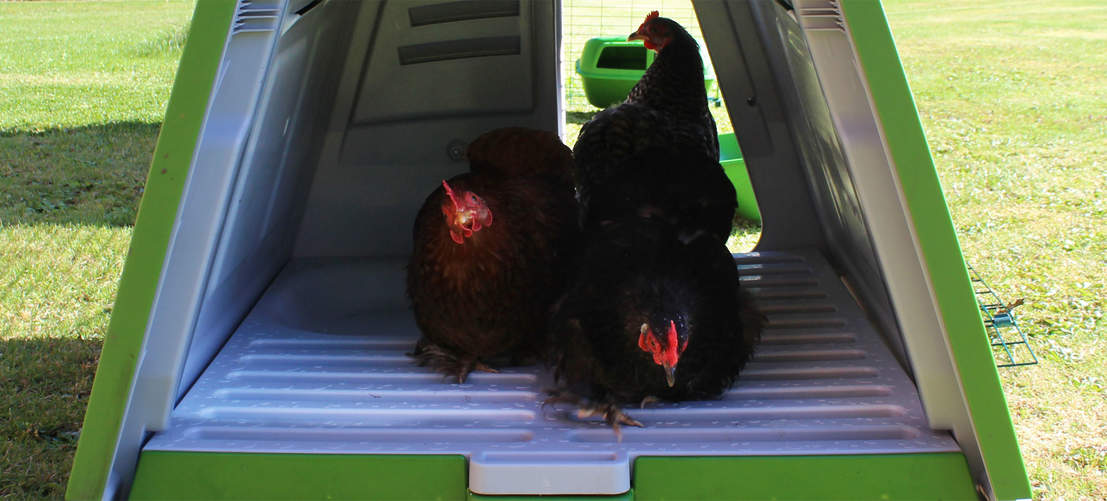
Chickens need plenty of room to roost in their coop
Sick Chickens Stop Laying Eggs
If your chicken stops laying eggs and you have ruled out that your hen is neither too young nor too old, not moulting, not brooding, and not hunkering down for a cold spell, then the reason for the drop in eggs could be illness. In particular, parasites such as lice, mites, fleas, and internal worms can be causing bodily stress, which has a significant impact on laying. For a bit more information on illness in chickens, check out our pages on chicken health for advice on diagnosing and – where possible – treating problems.
As well as illness being a cause of stress, it can also be brought on by other factors such as bullying, too much handling, injury, noisy children and pets in the garden, or a poor environment. Making sure the hens have a space where they can stay happy and healthy is vital. A setup such as the Eglu chicken coop and run, along with suitable perches, feeders and other essential accessories can help with this.
Something Else to Consider…
It’s also very possible that your hens are in fact laying eggs, but they’re going missing before you even have the chance to collect them! However, rest assured, the mystery behind ‘vanishing eggs’ can usually be explained with two main reasons.
The first of which is that free-ranging chickens often ‘go native’ and begin laying eggs in a spot in the undergrowth, rather than in the coop. You should check under shrubs, in long grass, and any secluded corner of your plot of land. If the AWOL laying has been going on for a long time, there may be a few eggs out there in the wilderness. Check their freshness by placing them in a bowl of water. If the eggs lie on their sides, they are fresh. If they are more upright (between 45 and 90 degrees), but still resting on the bottom of the bowl, they are not fresh, but still usable. Any that float have passed their sell-by date!
Eggs may also disappear if a hen acquires a taste for them. Egg-eating amongst chickens can be a sign of overcrowding or poor diet. Once she has acquired the taste, it can be difficult to stop a hen from eating eggs, and she may need isolating to stop her pecking at her neighbours’ eggs. The isolation may also induce slight stress, just enough to interrupt her own laying, which may, in turn, break the habit.
Normal Egg Service Resumed
Don’t worry – unless a hen is very old or very ill, her egg-laying should soon resume. Owners can aid the process by making sure they’re giving the birds everything they need. The key to a good egg supply is good food, a good space – and patience!

Backyard chickens produce tasty eggs!
This entry was posted in Chickens on November 13th, 2019 by linnearask
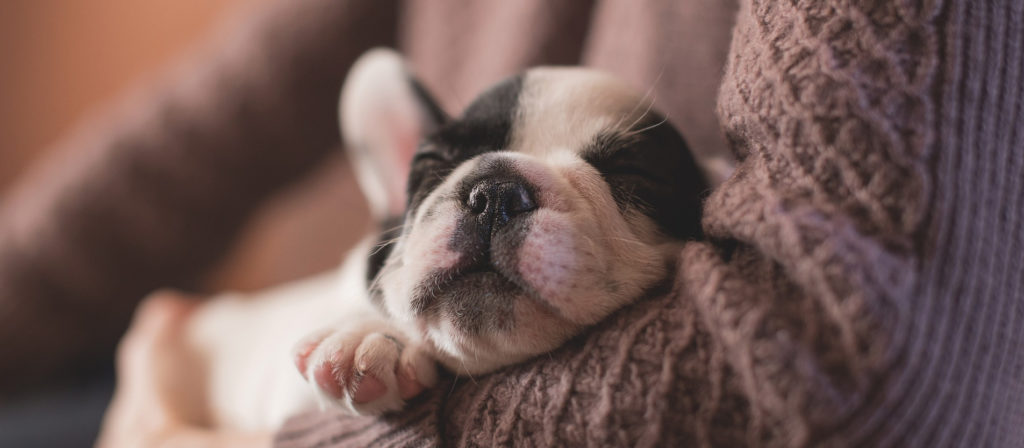 Naming pets can be difficult. Should you go for something highly original, something that describes the pet, or something that reflects your own personality? Should it be ‘safe’, picked from an online list of popular pet names? Or should it say something about the year the pet was born – perhaps a dog called Trump, a cat called Greta, or a budgie called Boris?
Naming pets can be difficult. Should you go for something highly original, something that describes the pet, or something that reflects your own personality? Should it be ‘safe’, picked from an online list of popular pet names? Or should it say something about the year the pet was born – perhaps a dog called Trump, a cat called Greta, or a budgie called Boris?
If it’s a family pet, parents often take the easy way out and ask the kids to think of names. We fool ourselves that we are being kind, inclusive parents, but in reality we’re just passing the buck!
Safety in numbers
Somehow, if there’s more than one new pet the floodgates of inspiration suddenly open. You can use the same letter – Maxi and Mini, Pixie and Pumpkin, or Arthur and Alfie. Or you can go for famous couples such as Pepper and George, Thor and Loki , Meg and Mog, Lennon and McCartney, Bubble and Squeak.
It becomes harder if there are more than two new animals to be named. A small flock of chickens, for example, may well start out with individual names, but chances are you’ll soon be referring to them simply as “The Chickens”.
The other definition of “safety in numbers” is “names used 1000s of times before”. Cats will always be called Tom, Fido will be used for Dogs, and Polly the parrot will remain iconic. And then there are all those lists of Most popular Pet Names. These change gradually as the years pass, just as popular baby names do.
A survey of 2018 faves, for example, suggests that Ruby, Bella, Max and Charlie are the commonest dog names in Australia. Cats are mainly called Luna, Bella, Coco and Charlie. And if you have a parrot, chances are it’s named Charlie, Kirsty, Ollie, Bernard or Basil.
Small mammals tend to share popular names, and right now the most popular ones are Flopsy, Thumper, Luna, Cookie and Rosie (and Flopsy and Thumper, along with Peter, have been top names for rabbits for 60 years or more).
No Laughing Matter?
If you opt for an amusing name, you need to be confident you won’t regret the decision further down the line. You will find that names such as Brexit, Doggy McDogface and Smelly Cat soon pass their sell-by date.
If you want a pet name that will always raise a smile, without overdoing it, it’s best to choose something not usually used for pets at all. You’ll probably never tire of a cat called Gary, a dog called John and a parrot called Karen. It’s a fine line, though. Quirkier names such as Laptop the cat, Curtains the dog and Bread Roll the parrot may quickly lose their appeal.
 Things To Avoid
Things To Avoid
If you have a new dog, you should avoid giving it a name that resembles a command word. For example, Sid sounds like ‘Sit’, Levi sounds like ‘Leave it’, Walt sounds like ‘Wait’, Hal sounds like ‘Heel’, and so on. This is less of an issue with other pet species.
Anything rude or controversial is going to cause embarrassment – for you (when you have to use the name in front of the neighbours), and for the poor children forced to address their furry friends as Sexy Paws, Satan, or whatever.
It’s also short-sighted to give pets baby names. Yes, that puppy may well look like Tummykins, and that kitten may respond well to Tiny Fluff, but once they’ve become adults, it will sound a bit silly.
You should also spare a thought for vets and kennels/catteries too. Having a dog called Cholmondeley (pronounced Chumley), a cat that sounds like ‘catkin’ but is spelled Qatqin, or even rogue letters in the name, such as Jaxon, Klyde or Phreddie, can lead to confusion in databases.
Things To Fall Back On When All Else Fails
You could choose a name that describes your pet’s behaviour or appearance. Flash, Dash, Nibbler, Scratchy, Sooty, Rosy, Socks, Spot, Biscuit, Brownie, and so on. There are also the famous names – Bugs, Daffy, Sylvester, Tweetie Pie, Lassie, Laika, Marmalade, Felix, etc.
And then, of course, there’s that classic ‘get out of jail free’ card – the kids. All you have to do is pronounce judgement on whatever names they come up with, saying “try again” if you don’t like it. Once they’ve decided on a Snowy, Scooby, Simba or Marley, you can sit back with the satisfaction of a difficult job well done.
This entry was posted in Pets on November 11th, 2019 by linnearask

Looking after a pet is a big responsibility. Not because it’s difficult or requires lots of time – neither of those are necessarily true – but because a pet is a living thing. It will rely on you as its friend and carer, its source of food, warmth and shelter.
If you can provide those things, keeping pets is without doubt one of life’s great pleasures. There’s often a big stumbling block though. If Mum, Dad or another well-meaning adult at home says you can’t have a pet, what’s the best way forward?
You could always accept it, of course – and maybe there are good reasons why, in your particular household, keeping a pet just isn’t going to work. For example, if you’re under 10 it’s not recommended that you should take full responsibility of a pet – you will need an older person to help out.
However, if the adult in question has simply not stopped to think about it, you’re in with a chance. For many of the commonest anti-pet arguments there are simple, practical facts that may help you change your parent’s mind.
Arm yourself with these, and you could soon be the proud owner of a new furry or feathered friend!
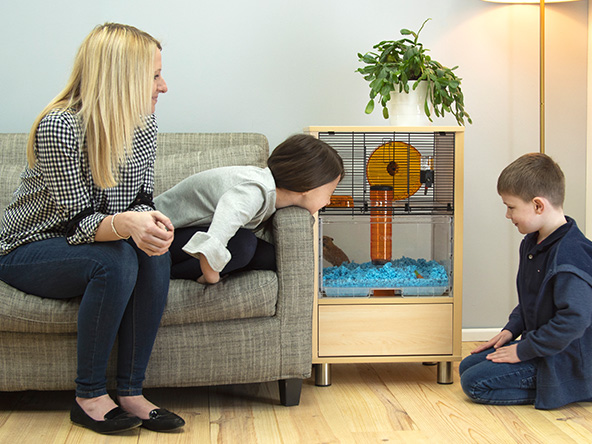
1 – Mum says: “Pets take too much looking after.”
You say: “It doesn’t have to be something that needs lots of training and walking, like a dog. A cat is pretty independent and easily house-trained. A small mammal like a gerbil or hamster only needs cleaning out once a week, and feeding them every day is simple. The same goes for budgies and finches.”
2 – Dad says: “We can’t afford to keep a pet.”
You say: “Small mammals are very cheap to buy. Or we could get a pet from a pet rescue centre. They’re always looking for new owners, and we’d be helping out an animal in need, and supporting a very important local service. As for pet food, even a big dog will only cost a few pounds a week, and a small pet will spend a month nibbling through a $10 bag of food.”
3 – Mum says: “Yes, but what about those huge vet’s bills?”
You say: “Gerbils and hamsters don’t usually have many health problems in their short lives, and don’t need vaccinations and microchips like dogs and cats. And there’s also pet insurance – for a fairly low monthly premium, a pet can be covered for all kinds of potential problems. That way we can avoid unexpected vet’s bills.”
4 – Dad says: “Pets are too noisy.”
You say: “Okay, dogs are noisy, but they can be trained not to woof too much. Chickens are quite noisy, but we could run it past the neighbours, and I’m sure the promise of a few eggs would win them round! Pet birds make a lot of noise, but how about the gentle squeak of a guinea pig, or the soft purring of a cuddly cat? And rabbits, gerbils and hamsters are pretty much silent.”
5 – Mum says: “They make too much mess.”
You say: “Cats are very neat and tidy. Small mammals make their mess inside their enclosures, and I can clean that up every week.”
6 – Dad says: “Pets are smelly.”
You say: “Not if their cages are cleaned properly every week. And dogs can be shampooed.”
7 – Mum says: “All that cleaning out… I’m not going to do it!”
You say: “Modern hutches and chicken coops are really easy to clean, and I could definitely manage it myself. Take a look at the Eglu for chickens, and the Go Rabbit Hutch, and you’ll see what I mean.”
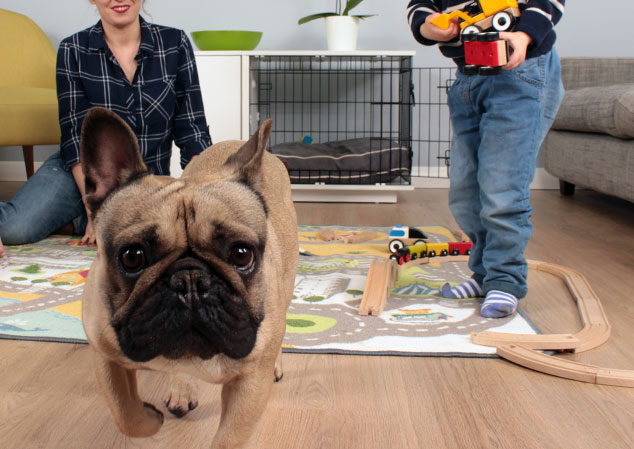
8 – Dad says: “You’re forgetting – someone at home is allergic to fur and feathers.”
You say: “There are hypoallergenic breeds of cat and dog, so let’s get one of those.”
9 – Mum says: “During term time there’s no one at home to keep the pet company.”
You say: “Some dogs are absolutely fine on their own for a few hours. Most cats are too. You just need to get one of the chilled-out breeds. And all small mammals and cage birds do just fine without a human around 24/7. Same goes for chickens – and you can even get automatic chicken coop doors for them these days.”
10 – Dad says: “But what’s the point?”
You say: “Pets are beautiful. They’re our best friends. Research shows that handling pets relieves stress. And chickens produce lots and lots of delicious eggs!”
This entry was posted in Uncategorised on November 9th, 2019 by linnearask
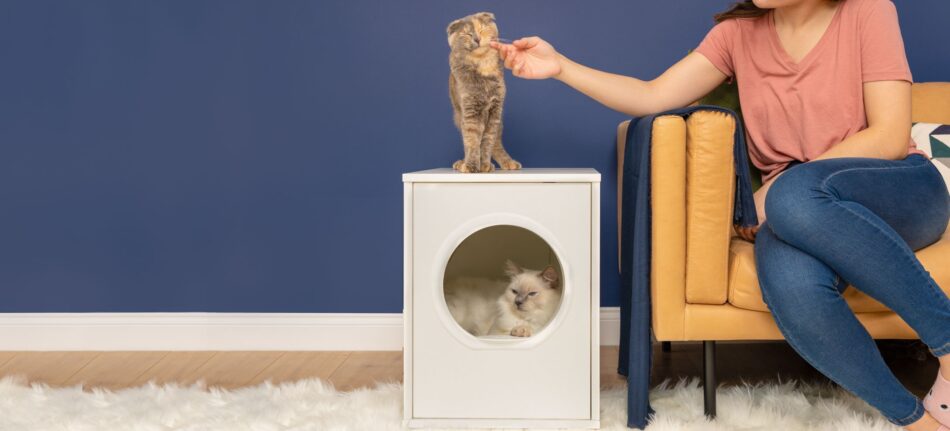
Cats have a reputation for being aloof but in reality, their behavior is often misinterpreted when compared to a dog’s. They might not greet you with a “welcome home” bark or wagging tail but cats actually form very strong bonds with their beloved owners, and the subtlety of their affection is all part of the feline charm. Discover more about what your four-legged friend is trying to communicate with these 15 signs that your cat loves you.
1. Your cat greets you when you open the door
The welcoming meow, the erect tale, the eager trot towards you… if that’s not a happy cat, we don’t know what is! Some cats even acquire an uncanny knack for predicting your arrival, sitting by the door or window and waiting for you before there’s any sight or sound of you in the street. But you’ll need to verify that psychic trick with one of the other humans in the house…
2. Your cat enjoys being stroked
While it’s true that some cats just love being stroked no matter who’s doing the stroking, many don’t like being manhandled at all. If your cat shies away from an over-friendly stranger or discourages them with a claw or two, but lets you stroke them, that’s definitely love.
3. They groom you
You probably groom your cat but have you ever thought about your cat grooming you? Cats can show their love for their owners by giving them their own version of a groom by licking. So, next time you’re being licked by your cat’s sandpaper-like tongue, take this as a sign of affection that means they see you as family.
4. Your cat gazes at you
If your cat looks into your eyes without turning away, they’re completely relaxed in your company. A long, slow blink is a good sign too. A cat will normally interpret staring as a sign of aggression and will look away (or run away) but if they’re relaxed enough to meet your gaze lovingly, take it as a great compliment.
5. They head-butt you
Cats rub against humans and furniture with little discrimination. But, a full-on head-butt rub is a sign of affection, and doesn’t just mean they only want some food!
6. They bring you presents
Okay, this isn’t your cat’s most endearing habit, but the ‘gift’ of rodents – dead, half-dead or very much alive – is a sign that they feel secure and at home, according to some experts. There’s also a school of thought that interprets it as affection – it’s something a mother cat would do for her kittens, teaching them how to handle prey. Curious about what else your cat is bringing home? Take a read of our Cats and wildlife in the garden blog for more.
7. Your cat meows a lot
Cats are thought to have a special ‘meow’ for humans. If your cat mews, gurgles and vocalises a lot in your presence, they’re telling you how much they love you. If your cat has stopped meowing though, it could be a number of factors. Other than being a little stressed out, they could be experiencing allergies, recovering from recent surgery or a temporary loss of voice!
8. Your cat gives you the twitchy tail treatment
When your cat walks up to you, tail erect and twitching, they’re letting you know how pleased they are to see you. Sometimes it’s because they know it’s food time, but it’s also often simple affection.
9. They fall asleep on you
Cats are always wary and need to feel super-secure when choosing somewhere to snooze. If they choose you as their bed, take it as a sign of complete trust and contentment. But, as great as it is to be chosen as your cat’s sleeping spot, they do need an actual cat bed. Omlet’s Maya Donut cat bed is a great choice and with a pillowy-soft feel and designer feet for home hygiene, this luxury cat bed is perfect for felines and humans alike. Pair with a super cosy cat blanket for ultimate comfort that your furry friend won’t be able to resist.
10. Your cat sticks their bottom in your face
Cats have scent glands on their rear ends, a kind of scented ID. If your pet presents you with their behind, it means you’re a friend. Don’t feel you have to reciprocate, though…
11. They show their belly
A cat that rolls on their back and invites you to rub their tummy is very chilled and sees you as a friend and playmate. But that doesn’t mean they won’t use their claws in the belly-rubbing game that follows, so watch out!
12. Purrrrrrrrrs
Cats purr for a number of reasons and whilst this soft rumble doesn’t always mean they’re happy, most of the time it does. Other times you might notice your cat purring if they’re hungry, frightened, or injured.
13. Your cat gently nibbles you
The soft nibble of a friendly cat is very different from an aggressive bite. Some cats use this oral greeting as a means of bonding with their human friends. Some owners, however, discourage it, as even a gentle nibble can be a little uncomfortable if the cat gets over-enthusiastic.
14. They follow at your heels
If it’s not food time, this behaviour is a sign of pure affection and your cat simply wants to be with you. Some cats tag along with their owners outdoors, and many are very happy to follow their best friends to bed. Once you’ve let them adopt this habit, it’s a hard one to break.
15. Your cat kneads you
This behaviour is thought to originate in kittens, pawing their mums to stimulate milk flow. If your cat does it to you, take it as a sign of affection, bonding and trust.
Omlet and your cat’s love
At Omlet, we’re not mistaken that cats definitely love their people – even if they show it a little differently. That’s why we design cat products to support the various personalities cats celebrate their differences. From cosy cat beds, to snuggly cat blankets and sustainable cat scratchers, Omlet has a range of ingenious inventions that your love will love.
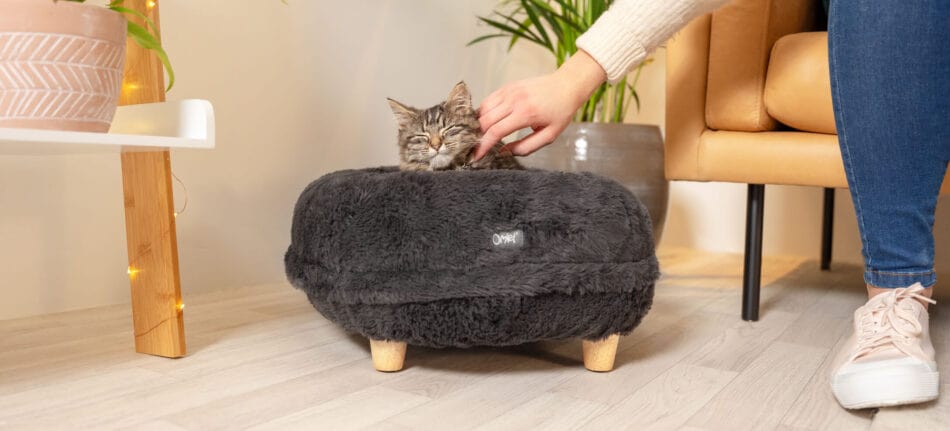
This entry was posted in Cats on November 3rd, 2019 by linnearask
 CHICKENS
CHICKENS










 Naming pets can be difficult. Should you go for something highly original, something that describes the pet, or something that reflects your own personality? Should it be ‘safe’, picked from an online list of popular pet names? Or should it say something about the year the pet was born – perhaps a dog called Trump, a cat called Greta, or a budgie called Boris?
Naming pets can be difficult. Should you go for something highly original, something that describes the pet, or something that reflects your own personality? Should it be ‘safe’, picked from an online list of popular pet names? Or should it say something about the year the pet was born – perhaps a dog called Trump, a cat called Greta, or a budgie called Boris? Things To Avoid
Things To Avoid



